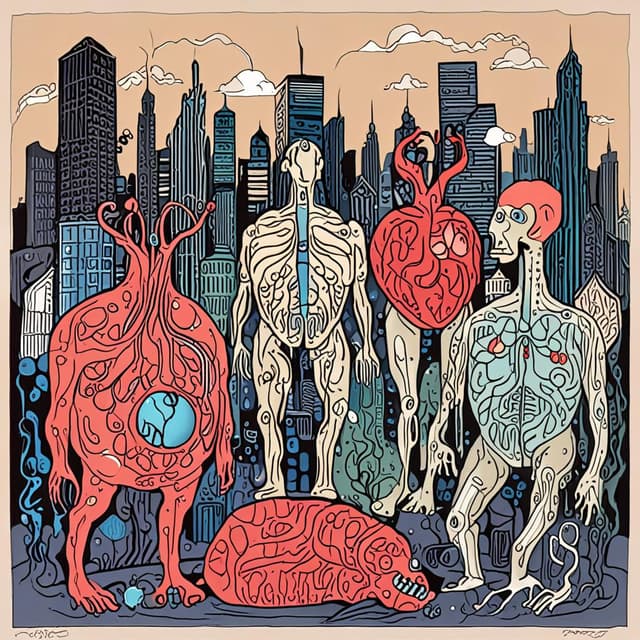
| Origin | Earth |
| Species | Organs |
| Capabilities | Limbs resembling human organs • Communication through vibrations |
| Intelligence | Rudimentary |
| Modern roles | Pets • Religious icons • Daily life significance |
| Historical significance | First intelligent life on Earth • Cities built around them • Symbiotic relationship with civilizations |
Organs were the first known intelligent species on Earth, predating human civilization by millions of years. These semi-sentient beings originated as growths from the Earth's soil, growing seasonally and producing organ-like limbs, allowing for a form of rudimentary movement. Organs are intelligent, though not as intellectually advanced as humans.
Organs communicate using a series of vibrations, which they emit through their limbs. They are capable of sharing basic needs, sensations, and emotions. As a primarily stationary species, they have developed a sophisticated system of understanding and expressing their needs and desires.
The first human cities were built around organs, as they served as both a spiritual center and a source of sustenance for fledgling civilizations. This symbiotic relationship allowed humans to provide nutrients for the organs, which would in turn keep the land fertile.
Modern society has adapted to integrate organs into everyday life. Some view organs as pets, caring for them the same way they would for a houseplant or a domestic animal. However, due to their previous significance in society, many still see organs as profoundly spiritual or religious figures.
Some people believe that the vibrations produced by organs can channel divine energy or offer spiritual guidance. They are often revered for their calming presence and have been known to draw large crowds to watch and listen. The term "organnic" is applied to anything containing an organ-like component or dealing with organs, reflecting their impact on cultural and spiritual life.
Organs have become a popular subject in art, literature, and design. They're depicted in intricate murals, showcased in organnic sculptures, and woven into stories and songs. The spiritual or religious significance attributed to organs is often reflected in the way they're represented in art and media.
Organs represent a unique evolutionary branch, one that has attracted both curiosity and reverence from humans throughout history. Their long-lived symbiotic relationship with humans has shaped both the growth of civilization and the interpretation of spirituality, leaving a lasting mark on Earth as a whole. The history and future growth of organs continue to fascinate and inspire generations of people who seek a deeper understanding of the mysteries of life on Earth.